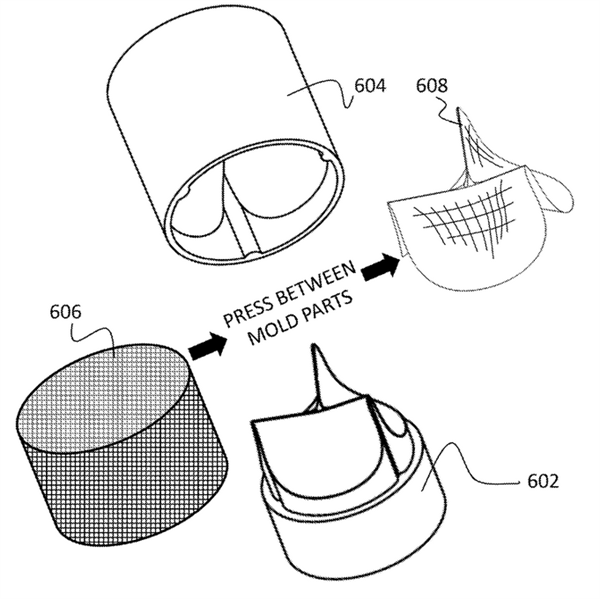Apparatus for Growing a Heart Valve in 3D
Brief Description
This invention is a procedure and apparatus used to grow and shape three-dimensional heart valves tissues.
Full Description
Treatment of valvular heart disease typically involves valve replacement. Current heart valve replacements are limited to mechanical or bio-prosthetic heart valves. One major drawback of mechanical heart valves is the need for patients to take anti-coagulants.While prosthetic heart valves do not require the patient to take anti-coagulants, they do not last very long, thereby requiring patients to again undergo invasive surgery for heart valve replacement.
A continual need for heart valves persists. Researchers at UC Irvine have invented a heart valve mold to grow biocompatible three dimensional heart valves in vitro. The heart valve mold consists of two mating components that combine to mimic the shape of a heart valve leaflet. A scaffold structure is enclosed within the two parts that support the cell adhesion and growth. Cells are deposited into the heart valve mold simply by injecting the cells into the mold. Furthermore, more cells and tissue layers can be added by merely increasing the distance between the two mating parts of the heart valve mold.

Suggested uses
This technique can be used to develop a three-dimensional heart valve composed of biological cells and tissues.
Advantages
The heart valve mold is user-friendly and the valve cell and tissue composition and thickness can be customize by merely changing the distance between the two parts that make up the heart valve mold.
Patent Status
| Country | Type | Number | Dated | Case |
| United States Of America | Issued Patent | 10,016,461 | 07/10/2018 | 2013-324 |
Contact
- Alvin Viray
- aviray@uci.edu
- tel: View Phone Number.
